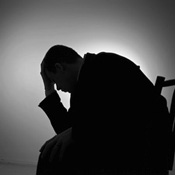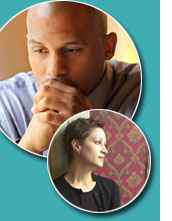Suicide
Suicide
Thoughts of suicide is most likely the worst type of depression. Suicide is " The act or an instance of intentionally killing oneself." (See Sources Below)
Suicide is considered the highest level of depression, usually thoughts leading to death. This sign of depression was the 11th leading cause of death in the United States, taking the lives of 30,622
 people in 2001 alone. It outnumbered homicide 3 to 2. 55 percent of suicides were commited with a firearm and it is said that the older the person, the more likely they are to commit suicide. This form of depression was the 8th leading cause death of males, and 19th death of females.
people in 2001 alone. It outnumbered homicide 3 to 2. 55 percent of suicides were commited with a firearm and it is said that the older the person, the more likely they are to commit suicide. This form of depression was the 8th leading cause death of males, and 19th death of females.So what are some risk factors and possible signs of this depression? Take a look at them:
- Previous suicide attempt(s)
- History of mental disorders, particularly depression
- History of alcohol and substance abuse
- Family history of suicide
- Family history of child maltreatment
- Feelings of hopelessness
- Impulsive or aggressive tendencies
- Barriers to accessing mental health treatment
- Loss (relational, social, work, or financial)
- Physical illness
- Easy access to lethal methods
- Unwillingness to seek help because of the stigma attached to mental health and substance abuse disorders or suicidal thoughts
- Cultural and religious beliefs-for instance, the belief that suicide is a noble resolution of a personal dilemma
- Local epidemics of suicide
- Isolation, a feeling of being cut off from other people
(See Sources Below)
As to most depressions, there are solutions. Suicide has prevention strategies as well. The NCIPC came up with this one-" This strategy results from collaboration among several federal agencies (including CDC), coalitions, community-based organizations, practitioners, and other partners. As conceived, the National Strategy for Suicide Prevention (NSSP) requires a variety of organizations and individuals to become involved in suicide prevention. The NSSP emphasizes coordination of resources and the application of culturally appropriate services at all levels of government-federal, state, tribal and community-and in the private sector. The NSSP represents the first U.S. attempt to prevent suicide through such a coordinated approach. Information about NSSP is available from the Department of Health and Human Services website."
Sources:
Dictionary.com
National Institute of Mental Health
CDC.gov
National Center for Injury Prevention and Control


